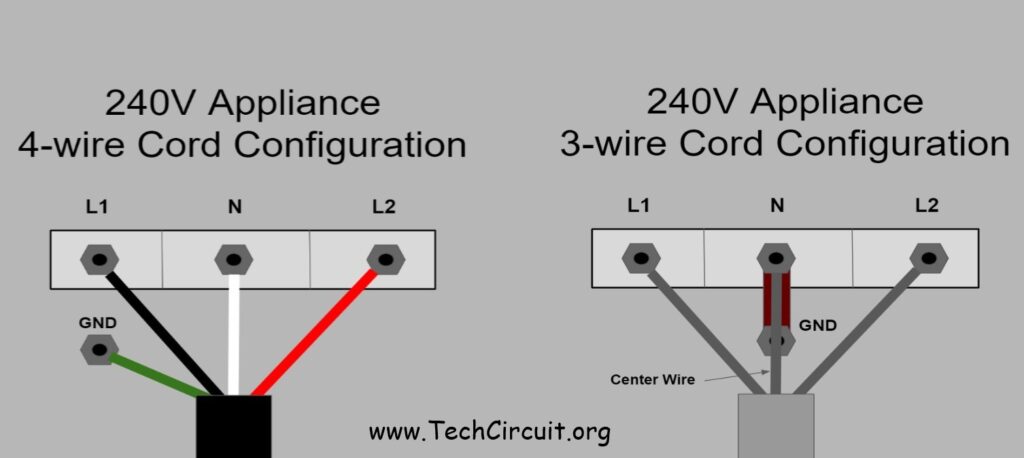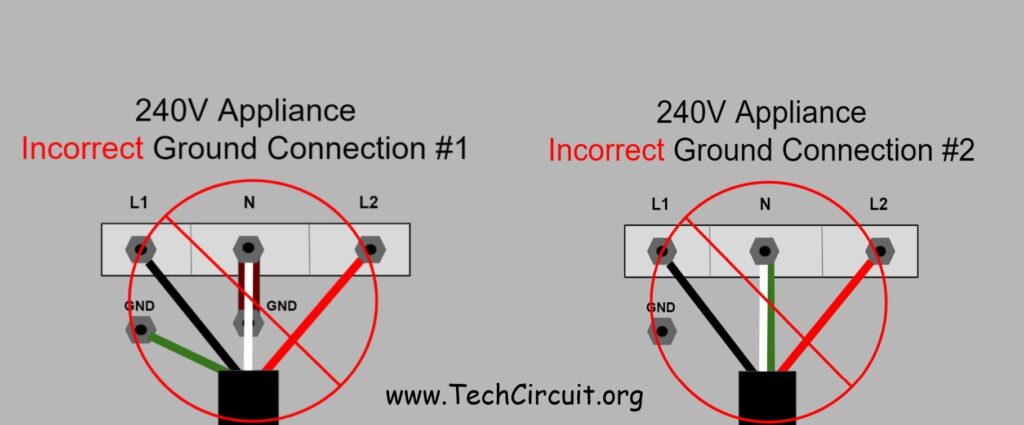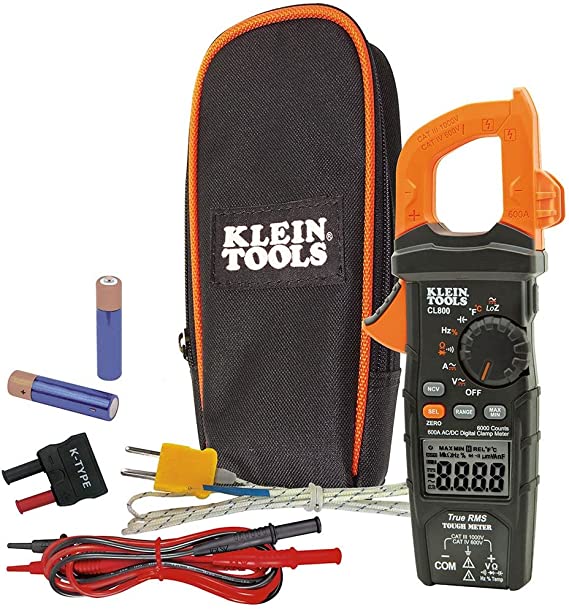Correct and Incorrect Terminal Block Connections
For many 240v appliances that plug into a receptacle, there are two common types of power cords. One is old-style 3-wire cord and the other is a relatively new 4-wire cord.
The 3-wire Cord
The older-style 3-wire cord consists of L1, L2, and Neutral. The voltage difference between L1 and L2 is 240v for most residential homes in the United States. The voltage difference between L1 and Neutral, as well as L2 and Neutral is 120 volts. The Neutral wire is normally the return path for L1 (for most 120v appliance loads) and is also bonded to the chassis (metal enclosure) of the appliance by a copper strap or jumper wire connected to the center lug of the terminal block. It is supposed to have an electrical potential of 0 volts with respect to Earth ground because Neutral is bonded to Earth ground at the breaker box.
One problem with a three wire cord is that if neutral becomes disconnected between the appliance and the breaker box (floating or loose neutral) the chassis can become “live”. That’s because the chassis would be floating, and longer at ground potential – meaning that the metal enclosure of the appliance may have a potential of as high as 120 volts with respect to ground if leakage current exists between either L1 or L2 to the chassis. Such a condition can cause an electrical shock to the user – particularly if they are barefoot or are touching both the dryer and washing machine at the same time. This risk of a floating chassis from an open neutral problem is mitigated by the later introduced 4-wire cord as described below.
The 4-wire Cord
The newer 4-wire style cord adds a ground wire for safety. The ground wire is supposed to be bonded to the chassis (metal enclosure) of the appliance. The voltage difference between L1 and L2 is the same as with the 3-wire cord. Also, just like with the 3-wire cord, the voltage difference between L1 and Neutral, as well as L2 and Neutral is 120 volts.
The Neutral wire is still the typical 120v return path for L1 (or L2) and has a 0 volt potential difference with respect to Earth ground. The main thing that distinguishes the 4-wire cord from a 3-wire cord is that Neutral is NOT bonded to the appliance chassis (metal enclosure). This is intentional. It is an added safety feature that minimizes the chance that the chassis will become energized. The Ground wire is the only wire that should be connected to the chassis.
Below is an image of the correct way to connect both 4-wire and 3-wire cords. Note that the 3-wire cord had a copper strap that bonds the center (neutral) lug to chassis ground. That is common with electric ranges. For electric dryers, there may be a jumper wire for such a purpose. The important thing to note for the 3-wire cord is that chassis ground must be connected to the neutral wire of the appliance cord.

Incorrect 4-Wire Power Cord Connections
Connecting Neutral to the chassis with a 4-wire cord violates code and is unsafe. Also, connecting both ground and Neutral together at the center terminal on the terminal block violates code (whether you leave the copper grounding strap in place or not). Ground and Neutral are intended to be of separate circuits. In other words, ground is not intended to carry current on a regular basis. It is only there to provide an emergency return path to the breaker box in the event of a short circuit or of leakage current to ground.
Note that Ground and Neutral are bonded together inside the breaker box. This does not mean that it is appropriate to bond them together beyond that. It may be non-intuitive to Technicians, but there are specific electrical scenarios and failure modes that would constitute a shock hazard when they are bonded together at the chassis. Please refer to the images below of two types of incorrect 4-wire power cord connections that should be avoided or corrected if encountered in the field.

Electrical Troubleshooting Equipment
Some useful tools for electrical troubleshooting are:https://amzn.to/3PVUD5b
A clamp-meter with LowZ, temperature, capacitance, frequency, diode check, and non-contact voltage testing (like a voltage pen).

Click Here for a suggested product that meets all of these requirements.
A voltage pen for testing the presence of AC voltage above the ground potential.

Click Here for a suggested product.
Alphabetical Links to all Tech Circuit Articles and Blogs – CLICK HERE
Alphabetical Links to all Tech Circuit Cheat Sheets/Field References for Appliance/HVAC Techs – CLICK HERE
To donate to the Tech Circuit – CLICK HERE
For additional electrical and electronics learning material for field techs, visit our homepage at http://www.TechCircuit.org or our Facebook group at https://www.facebook.com/groups/746823709133603.
TC
We are a participant in the Amazon Services LLC Associates Program, an affiliate advertising program designed to provide a means for us to earn fees by linking to Amazon.com and affiliated sites.
We are a participant in the Commission Junction Affiliate Program, an affiliate advertising program designed to provide means for us to earn fees by clicking on associated links.
